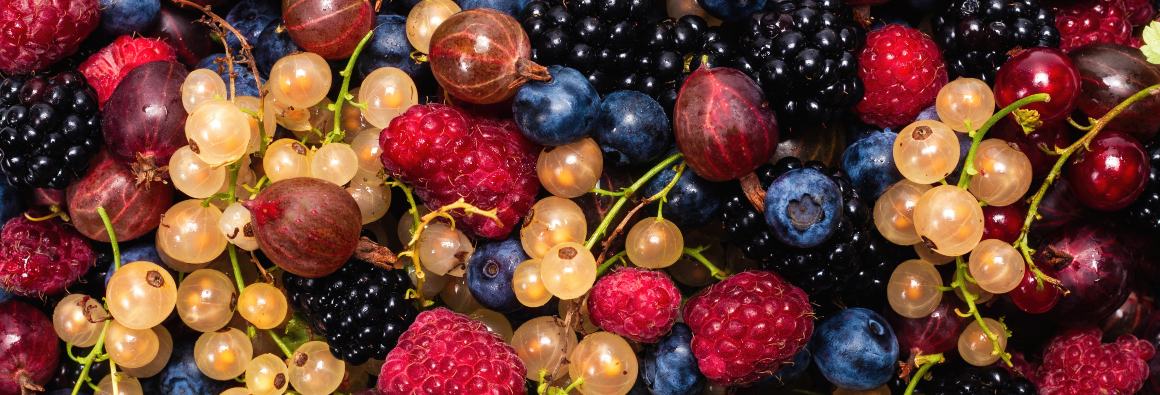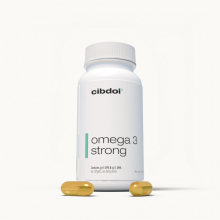What Fruit Is Very High in Omega-3?
Published:
Omega-3 fatty acids provide wide-ranging health benefits, from improving heart and brain health to fighting inflammation. While fish and supplements dominate discussions of omega-3 intake, certain fruits can also be decent sources, especially of the plant-based ALA omega-3. Keep reading to learn which fruits contain the most omega-3 and how to add more to your diet.
Contents:

Overview of Omega-3 Fatty Acids
Omega-3 fatty acids are polyunsaturated fats essential for health. There are three main types:
- ALA (Alpha-Linolenic Acid): Found in plants and converts in the body to active forms of omega-3
- EPA (Eicosapentaenoic Acid): Improves heart health and triglyceride levels
- DHA (Docosahexaenoic Acid): Critical for brain function and development
ALA is considered an essential nutrient because the body cannot produce it. We must obtain it from food. ALA converts to EPA and DHA at low efficiency rates of 5-10%. Still, ALA offers its own health benefits.
Experts recommend a minimum of 500 mg per day of combined EPA and DHA omega-3s for adults, with optimal intakes around 2000 mg. However, most people fall short of getting enough.
While fatty fish provides EPA and DHA directly, certain fruits can contribute meaningful amounts of ALA omega-3 to help meet needs.
Top Fruits Highest in Omega-3 ALA
All fruits contain just trace amounts of omega-3. The highest sources are those rich in healthy fats and oils, like avocados, olives, and some dried fruits.
Here are the fruits with the most considerable ALA omega-3 content:
1. Avocados
One whole avocado contains 261 mg of ALA omega-3, providing a significant amount.
Avocados also supply heart-healthy monounsaturated fats, fiber, potassium, and various antioxidants like lutein.
Add avocado slices to sandwiches, salads, and tacos or make guacamole for a nutrient-dense dip.
2. Blackberries
A 100 gram serving (about 3⁄4 cup) of blackberries provides around 135 mg of ALA omega-3.
Blackberries are also packed with vitamin C, manganese, and antioxidants called anthocyanins that give them their rich color.
Fresh or frozen blackberries make a great addition to smoothies, parfaits, oatmeal, or yogurt.
3. Raspberries
Like blackberries, raspberries contain approximately 128 mg of ALA omega-3 per 100 gram serving.
Raspberries also supply vitamin C, fiber, manganese and phytonutrients that combat inflammation.
Enjoy raspberries in fruit salads, blended into smoothies, mixed into baked goods, or simply eaten as a sweet and tart snack.
4. Olives
Green olives provide 115 mg of ALA omega-3 per 100 grams, while black olives have 92 mg.
Olives offer healthy monounsaturated fats, vitamin E, iron, copper, and protective polyphenols.
Add olives to salads, pizzas, sandwiches, tapenades, or Mediterranean dishes for a punch of flavor and nutrients.
5. Açaí Berries
Exotic açaí berries pack 107 mg of ALA omega-3 per 100 gram serving, along with antioxidants called anthocyanins.
Native to South America, açaí is typically eaten as a smoothie bowl or powder supplement. The fresh berries are rare outside their growing region.
6. Dried Apricots
Dried apricots contain 67 mg of ALA omega-3 per 100 grams. Drying fruits condenses all nutrients into a smaller serving.
Apricots supply beta-carotene, iron, copper, fiber, and antioxidants like lycopene and lutein.
Add dried apricots to trail mixes, cereals, oatmeal, salads, or stuffed into poultry for a flavor burst.
7. Prunes (Dried Plums)
Prunes offer 65 mg of ALA omega-3 per 100 gram serving. They also contain lots of fiber to support digestive and heart health.
Prunes work well in both sweet and savory dishes. Use them in stuffings, compotes, cereals, smoothies, or just for snacking.
8. Raisins
A 100 gram box of raisins provides around 59 mg of ALA omega-3, along with plenty of antioxidants, fiber, and carbohydrates for energy.
Raisins make a great natural sweetener for oatmeal, salads, baked goods, trail mixes, stuffings, and more.
Other Fruits with Modest Omega-3 ALA
While not the highest sources, these other common fruits still provide a bit of ALA omega-3:
- Strawberries: 55 mg per 100g
- Blueberries: 55 mg per 100g
- Grapes: 32 mg per 100g
- Cherries: 30 mg per 100g
- Apples: 25 mg per 100g
- Pears: 22 mg per 100g
- Peaches: 15 mg per 100g
Enjoying a wide variety of different fruits helps contribute small amounts that add up. Berries and stone fruits tend to be among the best sources.
Ways to Add More Fruits Rich in Omega-3
Here are some simple strategies to incorporate more omega-3-containing fruits into your regular diet:
- Make smoothies with avocado, olives, berries and cherries
- Top salads with olives, grapes, dried fruits and berries
- Create fruit compotes using apricots, plums and berries
- Mix berries into yogurt, oatmeal and cereals
- Make guacamole, tapenades, and olive-based sauces
- Snack on olives, dried fruits and berries
- Add fruits to stuffings for poultry and roast vegetables
- Bake berries into muffins, scones and other treats
- Blend avocado into cold soups like gazpacho
Combining a variety of high omega-3 fruits maximizes your dietary intake from plant-based sources.
Omega-3 Content of Fruits (Per 100 Grams)
Here is how these popular fruits compare in terms of total ALA omega-3 content:
| Fruit | Omega-3 ALA (mg) |
|---|---|
| Avocado | 261 |
| Blackberries | 135 |
| Raspberries | 128 |
| Olives, green | 115 |
| Açaí berries | 107 |
| Dried Apricots | 67 |
| Prunes | 65 |
| Raisins | 59 |
| Strawberries | 55 |
| Blueberries | 55 |
| Grapes | 32 |
| Cherries | 30 |
| Apples | 25 |
Aim for a variety of fruits, with emphasis on avocados, berries, olives, and dried options.
Should You Take an Omega-3 Supplement?
While fruits contribute some omega-3 ALA, the best sources of EPA and DHA remain fatty fish, fish oil, krill oil, and algal oil.
If your diet lacks sufficient omega-3-rich fish, taking a quality supplement can help you meet recommended daily intake levels for full health benefits.
When shopping for supplements, choose reputable third-party tested brands listing specific amounts of EPA/DHA, and avoid rancid fishy tasting products.
Key Takeaways on Fruits High in Omega-3
- Avocados offer the most omega-3 among fruits, with over 250 mg ALA per medium fruit.
- Berries like blackberries, raspberries, and blueberries provide over 100 mg ALA per serving.
- Olives, dried apricots, prunes and raisins also contain decent omega-3 levels.
- Blend, stuff, bake, or snack on high omega-3 fruits to maximize intake.
- If diet lacks oily fish, an algal oil or fish oil supplement can provide EPA and DHA directly.
- Enjoy a variety of fruits, with emphasis on avocados, olives, and berries for omega-3 benefits.
Focusing on high omega-3 fruits while also eating fatty fish or taking a quality supplement provides optimal intake of these essential fatty acids for good health.















